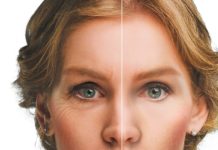Hello, women of all ages! Breast cancer stands as the second most common cancer for women globally, and a staggering 1 in 8 women will encounter this in their lifetime. Spotting the early signs is vital for catching it in its tracks and improving the odds of effective treatment. Don’t let this silent threat catch you off guard. Arm yourself with knowledge about the most important signs of breast cancer and seize control of your well-being. By familiarizing yourself with the signs mentioned below, you can find empowerment, prevention, and a sense of calm.
Distinguishing Normal Lumps from Possible Cancerous Ones
Breast lumps are quite usual, and the majority of them are non-cancerous (benign). Typical lumps can encompass cysts, fibroadenomas, or patches of dense breast tissue.
These often feel like small, movable masses. On the other hand, potentially cancerous lumps might have a distinct feel. They can be firm, irregularly shaped, and fixed in place.
Be on the lookout for other signs like nipple discharge, shifts in breast size or shape, skin dimpling, or nipple inversion. If any concerns arise, it’s crucial to consult a medical professional for accurate diagnosis.
Key Breast Cancer Signs to Be Mindful Of
Alterations in Breast Size or Shape
A noticeable sign of breast cancer is a change in breast size or shape. While breasts can naturally change due to factors like age, pregnancy, or menstrual cycles, a sudden, unexplained shift should be taken seriously.
This could appear as one breast becoming bigger or lower than the other. An irregularity, especially if it persists, might indicate a developing tumor within the breast tissue.
Regular self-examination can aid in detecting such changes early. If any discernible difference arises, it’s important to consult a healthcare professional for thorough examination and diagnosis.
Skin Dimpling or Puckering
Skin dimpling or puckering on the breast resembles the texture of an orange peel. This could indicate inflammatory breast cancer, an infrequent yet aggressive form of the disease.
It occurs when cancer cells obstruct lymphatic vessels in the skin, causing a buildup of lymph fluid. As tumor growth pulls the skin inward, a puckered appearance results.
This symptom might be mistaken for skin irritation or another benign condition, but it’s essential to seek medical evaluation if it persists. Early identification and intervention heighten the likelihood of successful treatment.
Nipple Discharge
Nipple discharge, especially if it’s bloody, clear, or an unusual color, and if it occurs without squeezing, could be a sign of breast cancer. While some discharges could relate to normal hormonal changes or benign conditions like infections or cysts, unexpected discharge should not be ignored.
The presence of blood or an unusually colored watery fluid might suggest a tumor in the breast ducts. It’s crucial to differentiate between common and worrisome discharge patterns. Any abrupt or unexplained nipple discharge warrants a visit to a doctor for further assessment.
Inverted Nipple
An inverted nipple, where the nipple turns inward instead of outward, can be a natural feature for some individuals. However, if this inversion emerges as new and wasn’t there before, it might be a cause for concern.
Breast cancer can alter the tissues behind the nipple, leading to its retraction or inversion. This shift might result from a tumor pulling the nipple tissue inward.
Though not all cases of nipple inversion are cancer-related, any new or sudden alteration in nipple orientation should be evaluated by a healthcare professional to rule out malignancy.
Lumps or Swelling in the Breast or Underarm Region
One of the most prevalent and well-known signs of breast cancer is the presence of lumps or swelling. While many lumps might be benign, like cysts or fibroadenomas, any new lump or a lump that changes in size, texture, or consistency requires assessment.
Similarly, swelling in the underarm area might indicate that the cancer has spread to the lymph nodes. Regular self-exams can assist in spotting these changes early.
Not all lumps are cancerous, but any lump or unusual swelling, especially if it persists, demands medical attention to discern its nature.
Recommended Ages for Starting Routine Mammograms
The age at which routine mammograms should begin can vary based on recommendations from various health organizations and individual risk factors. Generally, women at average risk are encouraged to commence annual mammograms at age 40 or 45.
Around age 50, it’s advised for all women to undergo mammograms every one to two years. Women with higher risk factors, like a family history of breast cancer or known genetic mutations like BRCA1/2, might need to start earlier and be screened more frequently.
Individuals should consult their healthcare providers to determine the most suitable screening schedule tailored to their risks and needs.
Breast Self-Examination: A Practical Guide
How to Conduct a Thorough Self-Exam at Home
Performing a breast self-examination (BSE) at home is a straightforward, step-by-step process that every woman can undertake to monitor breast health.
Begin by visually observing your breasts in a mirror with hands on hips, checking for changes in size, shape, and symmetry.
Lift your arms and look for any dimples or changes in skin appearance.
While lying down, use the pads of your middle three fingers to gently feel each breast in a circular motion, moving from the outer to the center.
Ensure that you cover the entire breast, from the upper area to the lower and from side to side.
Finally, while standing or sitting, repeat the palpation process, especially in the underarm region.
Ideal Times in the Menstrual Cycle to Conduct an Exam
For women who menstruate, the best time for a BSE is a few days after your period concludes, typically between the 7th and 10th day of your menstrual cycle. During this phase, breasts are less likely to be tender or swollen, making it easier to detect any irregularities.
For postmenopausal women or those who no longer menstruate, picking a specific day each month, such as the first or last day, helps maintain consistency. Remember, while BSEs are valuable for becoming familiar with your breasts, they should not replace mammograms or professional exams, particularly if you observe anything unusual.
Preventing and Detecting Breast Cancer
Making Lifestyle Changes to Reduce Risk
Adopting a healthy lifestyle can significantly lower the risk of breast cancer. Engaging in regular physical activity, maintaining a healthy weight, and moderating alcohol consumption are essential strategies.
A well-balanced diet rich in fruits, vegetables, and whole grains is recommended. Avoiding exposure to environmental toxins like specific pesticides and synthetic chemicals can also contribute.
If hormone replacement therapy is necessary, it should be used for the shortest duration possible. While these changes don’t guarantee prevention, they can notably diminish risk and enhance overall well-being.
Following Regular Breast Cancer Screening Recommendations
Regular screening is crucial for detecting breast cancer early. Women aged 40-44 have the option to start annual mammograms if desired. From ages 45-54, it’s suggested they undergo mammograms every year.
Once women turn 55 and older, mammograms can be spaced out to every two years or continue annually. Clinical breast exams and self-exams are additional tools that can help identify breast changes. Discussing individual risk factors with healthcare providers is important for






















